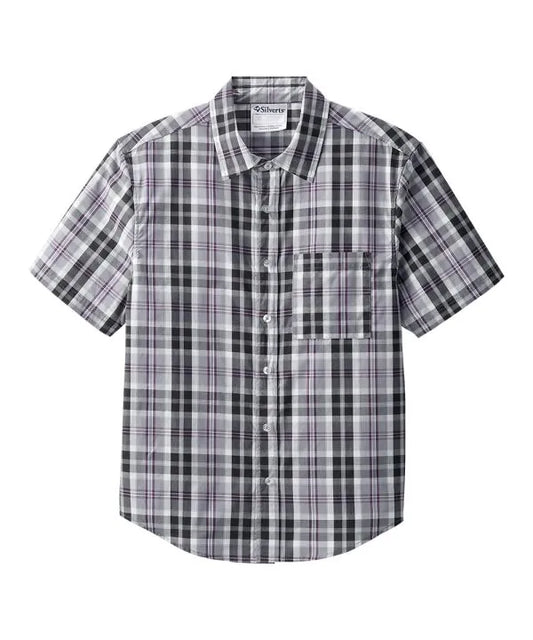Written by Zuhair Augla
Accessing disability benefits in the United States and Canada can be a complex and time-consuming process. Determining eligibility requires navigating multi-tiered systems involving government agencies, medical assessments, and legal reviews. This guide breaks down the key aspects of disability determination in both countries, offering clarity on how to apply, the challenges involved, and practical advice for success.
Who determines disabilities
In America and Canada, disability issues require multi-tiered processes delivered by federal, state, and provincial institutions, all supplemented with medical and legal reviews. While both countries attempt to ensure that support for citizens with disabilities is provided, the systems used are very different in structure and delivery.
In the Canadian context
Determining disability primarily utilizes federal programs, most importantly Service Canada, which manages the CPP-D program. The CPP-D is a source of income for individuals who cannot work because of a severe and prolonged disability. An application typically requires medical evidence from healthcare providers, loosely termed doctors or specialists, that describes the degree of a disability and how that impacts an individual's life. An application would be available to a team of medical adjudicators specifically trained to assess the severity and duration of impairments.
Apart from the federal government level, there are additional disability benefits and services at the provincial and territorial government levels. For instance, ODSP and Disability Assistance in British Columbia consider applicants at their discretion, usually based on medical assessments and, in some cases, financial need tests. In Canada, the emphasis in the determination processes is on collaboration among health professionals, government agencies, and applicants.
In the United States
Disability determination is generally made by the Social Security Administration through two significant programs: Social Security Disability Insurance and Supplemental Security Income. SSA defines disability as an impairment that prevents substantial gainful activity and is expected to last at least 12 consecutive months or result in death. The applicants must provide medical evidence to substantiate their pleas, often needing statements from treating physicians, specialists, and other healthcare providers.
In SSA, determination is made in a five-step process that involves the severity of the impairment, whether a person is able to perform past relevant work, and whether a person can do any gainful activity. After evaluation, a state-level DDS office recommends medical reviews, which it often submits to the SSA.
How long does it take for a disability to get approved?
The time it takes to process disability claims in Canada and the United States varies, depending on many factors, such as the type of program, the completeness of the application, and administrative backlogs.
In the U.S. the initial application usually takes between three and six months from the date of application for a primary decision from the SSA. The SSA will solicit and investigate your health records, working history, as well as other records to decide on your eligibility. If, as is usually the case, your initial claim is denied, you can ask for reconsideration within 60 days of the denial. This is the second stage of appeal, which again takes another three to five months. In this stage, another SSA representative conducts an in-depth review. If the reconsideration results in a second denial, you may appeal this denial and request a hearing in front of an administrative law Judge. Due to tremendous backlogs, the length of time required to get a hearing date can range from one year to one and one-half years, often much longer. During the hearing, you can introduce new evidence and testimony. Lastly, you can appeal to the Social Security Appeals Council if the judge denies your claim. This may take several additional months. Your last resort would be to file for a federal court review; this would add years more to the process.
In Canada, after the application to Service Canada for CPP Disability benefits, the processing of the application generally takes 3 to 6 months. They will assess your medical condition and work history to determine whether you meet their required qualifications. You can reapply for reconsideration within 90 days if your application was declined. This implies that your case is reviewed by another person in the Service Canada office and may take up to another three to five months. If the reconsideration decision is adverse, you can retain your right to appeal to the General Division of the Social Security Tribunal within 90 days. As caseloads are significant, a year will likely pass before a hearing date will be allocated. New evidence can be presented during the hearing, and explanations can be forthcoming. Lastly, if necessary, to the Appeals Division of the Social Security Tribunal, adding several more months to this process.
In general, the approvals for disability benefits can take several months to up to a few years in both countries, as this heavily depends on each case and whether any appeals are necessary. Being proactive, organized, and comprehensive with your application will help minimize delays and increase the likeliness of approval.
What conditions automatically qualify you for disability?
In the U.S., the SSA has a list of mental and physical impairments that automatically qualify individuals for disability benefits, commonly referred to as a “blue book,” and the list is as follows:
Neurological disorders, musculoskeletal disorders, cardiovascular conditions, mental health disorders, sensory impairments, cancer, chronic and terminal illnesses, neurological disorders, mental health disorders, and sensory impairments. Although there’s no official "blue book" in Canada, it shares a similar list of qualifying psychological and physical conditions. Importantly, qualifying for Canada Pension Plan Disability (CPP-D) benefits requires proving that a condition is severe, making work impossible and prolonged, expected to last indefinitely or result in death.
For both the U.S. and Canada, automatic qualification depends on solid medical evidence showing:
- Severity: Backed by detailed tests, medical evaluations, and specialists’ reports.
- Prolonged Nature: Proof the condition is long-term or life-threatening.
- Impact on Employment: Clear evidence that the condition prevents substantial work.
- Functional Limitations: Demonstrated inability to handle basic work tasks.
The ultimate goal in both countries is the same: to provide quick, reliable support to people dealing with overwhelming health issues that make it impossible to sustain a productive work life. The goal at June Adaptive is to provide individuals with disabilities with the best adaptive and comfortable clothing.
Men's Reversible Front Vest with Magnetic Closure
This winter vest is perfect for the cold weather ahead in the coming months. It’s revisable, which is great since it allows for several outfit ideas.
While the U.S. relies on its "blue book" for clarity, Canada focuses on individualized assessments, aiming for a balanced and fair approach to disability support.
Is it hard to get approved for disability?
It's usually an uphill battle. Both the U.S. and Canadian programs are similar in that they both aim to provide relief for people who, quite literally, are unable to work due to serious health problems. Both have very specific qualifications and reviews, which can sometimes cause difficulties. Although the qualification process is stressful you shouldn't have to feel stress in the clothes you wear.
This soft crew neck t-shirt from June Adaptive can be worn everywhere in all settings! It is easily worn and discrete, so no one can tell it is adaptive.
The major hurdles are highly restrictive medical listings. In many cases, approval relies on your being able to prove your condition is severe, of long duration, and completely prevents you from working. This usually entails compiling a mountain of paperwork, including doctor records, test results, and physicians' statements. Many times, it may take a considerable amount of time before the evidence is secured, and applications often get denied over minor requirements.
Another drawback is the inefficient and time-consuming approval process. All agencies go through every application to find out the impact of your ailment on your employability. Everything gets scrutinized-from capability, physically and mentally, to even your job background and the possibility of doing another kind of work. All these steps, in place to avoid fraud, interfere with the process of a legitimate case receiving approval.
Besides this frustration, the high denial rates for initial applications add to the frustration. For example, in the United States, a huge proportion of the claims filed at the beginning get rejected; this may force claimants into appeals, which could be very time-consuming. Hearings or legal representation on appeals are emotionally and financially draining.
Another problem is the major inconsistency in decision-making: everything depends on how the particular evaluators interpret the regulations. They dispute whether your impairment is "severe enough" or whether you could theoretically change jobs. Factors such as age, education, and availability of transferable skills are brought in and often work against applicants with real needs.
Empowering through Adaptive Clothing
Disability determination processes may be daunting, but finding ways to feel empowered in daily life can make a difference. Adaptive clothing offers comfort, ease, and independence, helping individuals face challenges with confidence. June Adaptive hasa variety of adaptive clothing that are incredibly comfortable.
This is a great pair of joggers great for recovery and outside activity. It’s made for comfort and flexibility.
Explore JuneAdaptive.com for a range of thoughtfully designed adaptive clothing that prioritizes comfort and independence.
Success is possible and preparation is the key. Ensuring your medical documentation is as complete as possible, and following the application instructions to the letter will go a long way in increasing success rates. Working with a disability advocate/attorney with many years of experience can also minimize fear.
In other words, applying for disability can be overwhelming. The system is devised to safeguard those who need protection; ironically, however, its design has erected barriers for many. At times, all that may be required is some persistence, thorough documentation of your condition, and advice from a professional expert, which may make all the difference in improving your chances of approval.
Navigating disability determination systems in the U.S. and Canada can be overwhelming, but understanding the processes and preparing thoroughly can improve your chances of success. Remember, empowerment goes beyond official recognition choosing adaptive clothing that supports comfort and confidence is one way to take control of your journey.
If you’re interested in more products, sign up for the newsletter at the bottom of the page.


















